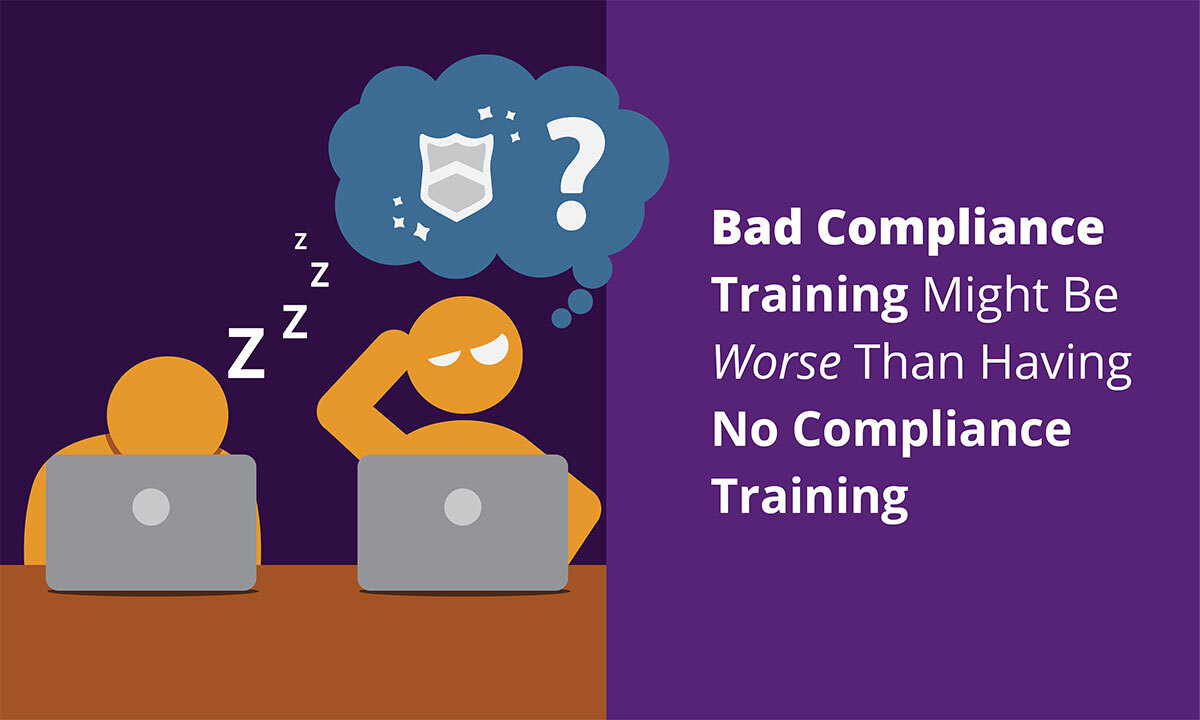
Bad Compliance Training Might Be Worse Than Having No Compliance Training
You think horror movies are scary? Try reading this article from Nate Dvorak at Gallup. He presents some pretty grim data about traditional compliance training, and it’ll give you some goosebumps.
When survey respondents were asked to reflect on ethics and compliance training received in the previous year, here were a few of the ugly stats that came back:
- Only 10% strongly agreed that they learned something that changed how they work
- Just 11% strongly agreed that their coworkers applied what they learned
- Less than a quarter felt the training was excellent
- Those who rated the training with a 1, 2, or 3 (on a five-point scale) were actually less likely to know where to go to share a concern than employees who did not even receive training. Talk about ineffective!
You read that right. A lot of compliance training is not only ineffective, it might even be detrimental to the compliance program’s charge to create a speak-up culture.
Compliance officers have a hard enough time obtaining and justifying the resources they need to do their jobs—and data like this from a trusted source like Gallup only makes it worse. But this really isn’t new. We’ve been saying for a while that most compliance training is a #fail. We literally wrote a book about it.
But there’s hope when compliance teams stay focused on the right goal. Broadcat’s philosophy has always been that compliance teams’ goal for training should be to change behavior.
But it means meeting people where they are. Busy, overwhelmed with their own job responsibilities, and not dutifully attentive to an online module just because they got an email saying that their annual training has to be done by the end of the month. It also means not always relying on the same old vehicle for training. The fad nowadays is pushing out a sleek module on some fancy LMS. Meanwhile, another takeaway from the Gallup survey was that online-only training was rated the worst compared to in-person or hybrid training.
So run an assessment on your program’s training. Ask yourself whether the training has the right goal, and if you’ve structured it to be successful in reaching that goal. There will almost certainly be room for improvement. And if you feel like you need some help, we might have a pointer or two for you.

